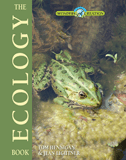
Adaptation
Originally published in Creation 14, no 2 (March 1992): 13.
Adaptation of plants does not prove evolution.
If living things such as plants have been observed to adapt to their environment—isn’t that evolution?
To see why it is not, imagine a population of plants in a reasonably well-watered environment. Now the climate slowly changes, so as to become progressively more dry. After several generations, it is noticed that these particular plants tend to develop deeper roots. This helps them reach water at deeper levels. Also, they have a more waxy cuticle (outer coating) than before which prevents them from losing as much moisture.
This could only have happened because the (genetic) information...was already in the population.
Both of these are adaptations. The plants are now better adapted to survive in their new environment. But—this could only have happened because the (genetic) information allowing waxier cuticles and deeper root systems was already in the population. Evolution, as an explanation of the whole world of living things, would require that information appears which was not there before. An amoeba does not have the information required to construct a man, so ‘amoeba-to-man’ evolution requires that new, more complex information be added. Therefore examples of adaptation such as these plants most definitely do not demonstrate how alleged amoeba-to- man evolution could have occurred.
If we had observed closely while the plants were growing in the moist environment, now and again there would have been plants with a waxier cuticle than others, and some with deeper roots (every population has built-in variation—just look around at the people in the street).
These were not the average, and they had no advantage over the others. However, once the area began to dry out, they were better able to survive and pass on their genetic information to offspring. Those with more shallow roots and less waxy cuticles were the first to die out. In time, the whole population will be, on average, deeper-rooted with thicker cuticles.
This is natural selection preferring one lot of information over another, leading to adaptation. However, selection by itself can choose only from what is there—it can’t create new, more complex, functional information needed to transform one type of creature into another. (That’s another question altogether—whether mutation [copying mistakes] can achieve this.)
In fact, such a change as we have discussed is really a ‘downhill’ change—some of the information in the plants which have now died out was not represented in the ‘newer’ (surviving) strain and is thus lost from the population forever.
Recommended Resources

Answers in Genesis is an apologetics ministry, dedicated to helping Christians defend their faith and proclaim the good news of Jesus Christ.
- Customer Service 800.778.3390
- © 2025 Answers in Genesis



